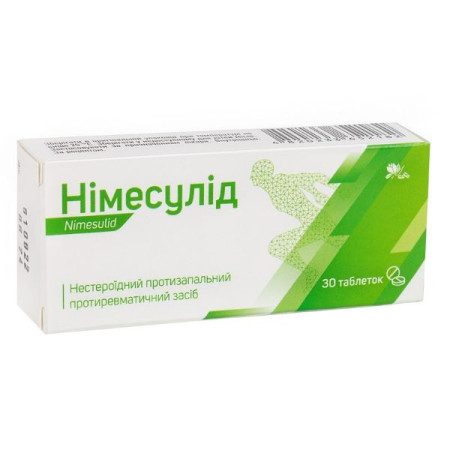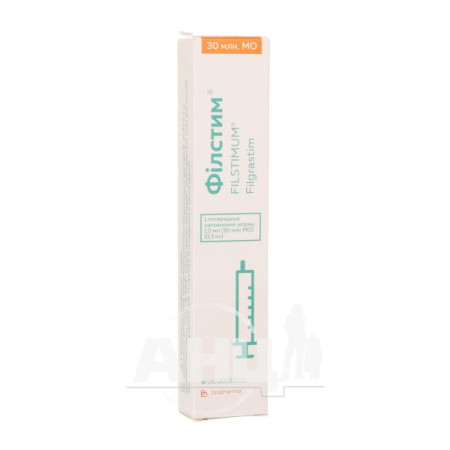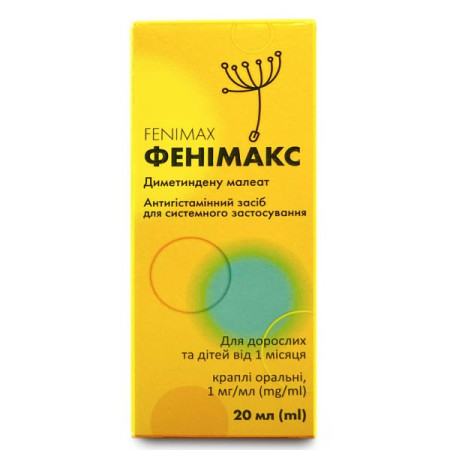Ventolin Evohaler aerosol for inhalation dosed 100 mcg/dose canister 200 doses No. 1

Instructions Ventolin Evohaler aerosol for inhalation dosed 100 mcg/dose canister 200 doses No. 1
Composition
active ingredient: salbutamol;
1 dose contains salbutamol 100 mcg (in the form of salbutamol sulfate);
excipient: propellant HFA 134a.
Dosage form
Inhalation aerosol, metered.
Main physicochemical properties: white or almost white suspension.
Pharmacotherapeutic group
Drugs for the treatment of obstructive airway diseases. Adrenergic drugs for inhalation use. Selective beta2-adrenoceptor agonists. Salbutamol. ATC code R03A C02.
Pharmacological properties
Pharmacodynamics
Salbutamol is a selective beta2-adrenergic agonist. In therapeutic doses, it acts on beta2-adrenergic receptors of bronchial smooth muscle, providing rapid (within 5 minutes) and short-term (4–6 hours) bronchodilation in patients with reversible airway obstruction.
Pharmacokinetics
After inhalation, 10 to 20% of the administered dose reaches the lower respiratory tract. The remainder remains in the inhalation device or in the nasopharynx, from where it is swallowed. The portion of the dose that reaches the respiratory tract is absorbed into the lung tissue and enters the bloodstream, but is not metabolized in the lungs.
After entering the systemic circulation, the drug is metabolized in the liver and excreted mainly by the kidneys in an unchanged state and as a phenol sulfate metabolite.
The dose of the drug that has entered the digestive system from the nasopharynx is absorbed from the gastrointestinal tract, undergoes the first stage of metabolism in the liver to the phenol sulfate compound, and is then excreted by the kidneys. Most of the drug is excreted from the body within 72 hours. Binding to plasma proteins is 10%.
Indication
Short-term (4 to 6 hours) bronchodilation with rapid onset (within approximately 5 minutes) in cases of airway obstruction.
Relief of asthma attacks in diseases accompanied by airway obstruction, such as bronchial asthma.
Prevention of bronchospasm attacks associated with allergen exposure or caused by physical exertion.
In the complex therapy of patients with bronchial asthma.
Contraindication
History of hypersensitivity to any component of the drug. Do not use salbutamol formulations that are not intended for intravenous administration to terminate uncomplicated preterm labor or threatened miscarriage.
Interaction with other medicinal products and other types of interactions
Salbutamol should not be used with non-selective beta-adrenergic blockers (e.g. propranolol).
Concomitant use of salbutamol with MAO inhibitors is not contraindicated.
Application features
In order to ensure optimal delivery of the drug to the lungs, the patient's inhalation technique should be checked. Patients should be warned that the taste may be different from that of their previous inhaler.
An increased need for bronchodilators, especially short-acting inhaled beta2-agonists, to control asthma symptoms is indicative of an exacerbation of the disease. In these cases, the treatment plan should be reviewed and the issue of prescribing higher doses of inhaled corticosteroids or a course of oral corticosteroids should be considered.
Sudden and progressive worsening of asthma is a life-threatening condition that requires initiation or increase in corticosteroid therapy. Daily monitoring of peak expiratory flow is recommended for patients at risk.
Bronchodilators should not be the sole or primary treatment for patients with severe or unstable asthma. Such patients should be monitored regularly, including pulmonary function tests, as severe asthma is a life-threatening condition and the maximum recommended doses of inhaled and/or oral corticosteroids should be considered for the treatment of such patients.
If the effect of the usual dose of Ventolin Evohaler becomes less effective or the duration of its action is reduced (less than 3 hours), the patient should consult a doctor. Increasing the dose or frequency of use of the drug is carried out only by a doctor.
Severe asthma exacerbations should be treated as usual.
Sympathomimetics, including salbutamol, have cardiovascular effects. There is evidence from post-marketing and published data of rare cases of myocardial ischemia associated with the use of salbutamol. Patients with underlying cardiac disease (e.g. coronary artery disease, arrhythmia or severe heart failure) treated with salbutamol should seek medical advice if they experience chest pain or other symptoms suggestive of worsening cardiac disease. Attention should be paid to assessing symptoms such as dyspnea and chest pain, which may be due to both cardiac and respiratory disease.
Severe hypokalemia may result from treatment with beta2-agonists; this is mainly observed with parenteral or nebulized forms. Particular attention is paid to patients with acute severe asthma, as hypokalemia may be potentiated by concomitant use of xanthine derivatives, steroids, diuretics, and hypoxia. In this situation, it is recommended to check the serum potassium level.
Salbutamol should be used with caution in patients receiving high doses of other sympathomimetics. Like other beta-adrenergic agonists, salbutamol may cause reversible metabolic changes, such as increased blood sugar levels. Compensation for such changes in diabetic patients is not always possible, and there have been isolated reports of ketoacidosis in such patients. Concomitant use of corticosteroids may exacerbate this condition.
As with other inhaled medications, paradoxical bronchospasm with immediate worsening of dyspnea after administration may occur. In such cases, alternative formulations or other rapid-acting inhaled bronchodilators should be administered immediately. Salbutamol should be discontinued immediately, the patient assessed and, if necessary, another rapid-acting bronchodilator should be administered on a permanent basis.
Ability to influence reaction speed when driving vehicles or other mechanisms
There is no data on the effect. In case of adverse reactions from the nervous system (tremor), driving or working with other mechanisms should be restricted.
Use during pregnancy or breastfeeding
Salbutamol has been shown to be reproductive toxic in animal studies. Safety in pregnant women has not been established. There have been no controlled clinical trials of salbutamol in pregnant women. There have been isolated reports of various congenital malformations in utero, including cleft palate, limb defects and cardiac abnormalities. Some women have taken many other medicines during pregnancy. Ventolin Evohaler should only be used during pregnancy if clearly needed.
Salbutamol is likely to pass into breast milk, therefore it should be administered with caution to women who are breastfeeding. It is unknown whether the presence of salbutamol in breast milk has a harmful effect on the newborn/infant, therefore its use in women who are breastfeeding should be limited to cases where the benefit of its use for the woman outweighs the possible risk to the child.
Method of administration and doses
Ventolin Evohaler is an aerosol intended for inhalation through the mouth only. Patients who have difficulty synchronizing breathing with the use of the inhaler are recommended to additionally use a spacer - a device to facilitate inhalation of inhaled medications.
Adults (including elderly patients)
For the relief of asthma symptoms, including acute bronchospasm, 1 inhalation (100 mcg) can be used as a minimum starting dose. If necessary, the dose can be increased to 200 mcg (2 inhalations).
Prophylactically, 200 mcg (2 inhalations) is used 10–15 minutes before physical exertion or expected contact with allergens.
For long-term maintenance therapy, it is recommended to use 200 mcg (2 inhalations) 4 times a day. The total daily dose of salbutamol should not exceed 800 mcg (8 inhalations).
Children over 12 years of age are given doses as for adults.
Children aged 4 to 12 years
For the relief of acute bronchospasm, 1 inhalation (100 mcg) is used. If necessary, the dose can be increased to 200 mcg (2 inhalations).
Prophylactically, 100 mcg (1 inhalation) is used 10–15 minutes before physical exertion or expected contact with allergens; if necessary, the dose can be increased to 200 mcg (2 inhalations).
For long-term maintenance therapy, it is recommended to use 200 mcg (2 inhalations) 4 times a day. The total daily dose of salbutamol should not exceed 800 mcg (8 inhalations).
Increased beta2-agonist requirements may indicate worsening asthma. In these circumstances, the patient's treatment regimen should be reviewed and the need for glucocorticosteroid therapy considered.
Instructions for using the inhaler
Checking the inhaler.
Before using the inhaler for the first time or after a break in use of 5 days or more, remove the mouthpiece cap by lightly pressing on it from the sides, shake the inhaler well and spray it into the air twice to make sure it is working properly.
Remove the mouthpiece cap by gently pressing on the sides. Make sure that there are no foreign objects inside or outside the inhaler, including the mouthpiece. Shake the inhaler thoroughly to remove any foreign objects from the inhaler and to mix the contents evenly. Hold the inhaler vertically between your thumb and fingers, with your thumb on the body of the inhaler below the mouthpiece. Breathe out as deeply as possible, then place the mouthpiece in your mouth between your teeth and cover it with your lips without biting. Breathing in through your mouth, press the top of the inhaler to spray the salbutamol, while continuing to breathe in slowly and deeply. One press on the top of the inhaler corresponds to one dose. Hold your breath, remove the inhaler from your mouth and remove your finger from the top of the inhaler. Continue to hold your breath for as long as possible. If you need to take further puffs, wait for approximately 30 seconds, holding the inhaler upright. Then follow steps 3–7. Replace the mouthpiece cap by pushing in the required direction until it clicks.
IMPORTANTLY:
Follow the steps described in points 5, 6 and 7 without rushing. Before spraying, you need to inhale as slowly as possible. The first few times you should practice in front of a mirror. If a "cloud" appears near the top of the inhaler or on the sides of your mouth, you need to start the procedure again from point 2.
If your doctor has given you other instructions for using your inhaler, follow them and seek advice if you have any difficulties.
Children. Young children may need assistance; it may be necessary for an adult to administer the inhaler. Ask the child to exhale and spray immediately after they begin to inhale. It is recommended to practice the technique together. Older children or frail adults can hold the inhaler with both hands. Place both index fingers on the top of the inhaler and both thumbs on the base below the mouthpiece.
Cleaning
The inhaler should be cleaned at least once a week.
Remove the metal canister from the plastic case of the inhaler and remove the mouthpiece cap. Rinse the plastic case and mouthpiece cap with warm water. Dry them inside and out. Replace the metal canister and mouthpiece cap.
DO NOT PUT THE METAL BALLOON IN WATER
Children
The drug is intended for the treatment of children aged 4 years and older.
Overdose
The most common symptoms of salbutamol overdose are transient changes pharmacologically induced by beta-agonists, such as tachycardia, tremor, hyperactivity and metabolic disturbances, including hypokalemia (see sections "Special instructions for use" and "Adverse reactions").
Hypokalaemia may occur as a result of salbutamol overdose, therefore serum potassium levels should be monitored. Lactic acidosis has been reported with high therapeutic doses or overdose of short-acting beta2-agonists, therefore serum lactate levels should be monitored and metabolic acidosis should be monitored accordingly, particularly in the event of persistent or increasing tachypnea despite relief of bronchospasm symptoms such as wheezing.
Adverse reactions
The adverse reactions listed below are classified by system organ class and frequency of occurrence: very common (≥ 1/10), common (≥ 1/100 and < 1/10), uncommon (≥ 1/1,000 and < 1/100), rare (≥ 1/10,000 and < 1/1,000), very rare (< 1/10,000), including isolated reports, frequency unknown. In general, very common and common adverse reactions are determined from clinical trial data, while rare, very rare and not known are determined from spontaneous reports.
On the part of the immune system
Very rare: hypersensitivity reactions including angioedema, urticaria, bronchospasm, hypotension and collapse.
From the side of metabolism, metabolism
Rare: Hypokalaemia. Potentially, the use of beta2-agonists may cause severe hypokalaemia.
Neurological disorders
Common: tremor, headache.
Very rare: hyperactivity.
Cardiac disorders
Common: tachycardia.
Uncommon: palpitations.
Very rare: cardiac arrhythmias, including atrial fibrillation, supraventricular tachycardia and extrasystole.
Frequency not known: myocardial ischemia (see section "Special warnings and precautions for use").
Vascular disorders
Rare: peripheral vasodilation.
Respiratory, thoracic and mediastinal disorders
Very rare: paradoxical bronchospasm.
Gastrointestinal disorders
Uncommon: irritation of the mucous membranes of the mouth and pharynx.
Musculoskeletal and connective tissue disorders
Uncommon: muscle cramps.
Expiration date
2 years.
Storage conditions
Keep out of reach of children. Store below 30°C. Do not freeze. Avoid direct sunlight. Do not disassemble, puncture or burn the canister even after complete use.
Packaging
Aluminum can with a dosing valve. The can is equipped with a plastic sprayer with a dosing tip and a dust cap. The can contains at least 200 doses of the drug. 1 can in a cardboard box.
Vacation category
According to the recipe.
Producer
Glaxo Wellcome Production, France.
Glaxo Wellcome Production, France.
Location of the manufacturer and its business address
Glaxo Wellcome Production, Zone Industriale No. 2, 23, rue Lavoisier, 27000 Evreux, France.
Glaxo Wellcome Production, Zone Industrielle #2, 23, rue Lavoisier, 27000 Evreux, France.
There are no reviews for this product.
There are no reviews for this product, be the first to leave your review.
No questions about this product, be the first and ask your question.















